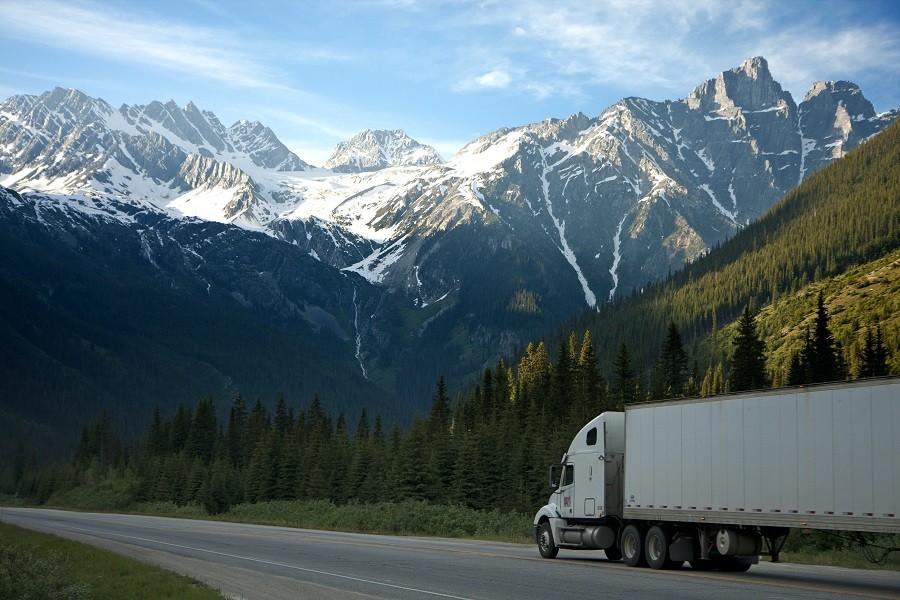

Market Overview: Trucking rates per mile 2022
After the trucking crisis in 2022, owner-operators earned much less money as a result of the dramatic decline in rate per mile. That’s how freight rates per mile have changed during this year:
- Why are trucking rates so low?
-
The Top 5 Trends of the Trucking Industry in 2022
- 1. Increasing Fuel Costs
- 2. Growing Freight Volume
- 3. Unexpected Mergers and Bankruptcy
- 4. Increasing Reliance on Technology
- 5. Growing Demand Due to Ecommerce Growth
- Why trucking rates are important
-
Current Freight Rates
- Van Freight Rates – August 30, 2022
- Reefer Freight Rates – August 30, 2022
- Flatbed Freight Rates – August 30, 2022
- After the crisis always comes an opportunity
Why are trucking rates so low?
When the pandemic hit, people needed more cargo, and the market for rented trucks skyrocketed. Numerous people have chosen to form their own trucking enterprises as a result of the extensive hiring drives that transportation corporations have run.
However, because the pre-pandemic levels of transportation have returned, there are now simply too many truckers and not enough demand for trucking. A surplus of supply indicates that prices will decrease, as required by the principles of supply and demand.
But there are other factors that have affected the transportation business as well. Recent world events have made it challenging for truckers to make money, such as the Russian invasion of Ukraine, which increased fuel prices, and the COVID epidemic in China’s export hubs, which increased commodities prices.
Even so, not everything is lost for truckers despite the decreased demand for consumer products. Even if the supply of consumer items is decreasing, industrial commodities still make up 70–80% of freight, and manufacturing businesses are still prepared to pay for road delivery.

The Top 5 Trends of the Trucking Industry in 2022
1. Increasing Fuel Costs
The operators of trucking companies are aware that a larger portion of their overall costs is devoted to gasoline. Currently, the fuel industry is experiencing fluctuations in market prices caused by demand and supply. A coordinated push toward alternative fuels may also have an impact on the sector.
On August 2022 the national average diesel price is $5.12 a gallon compared to $5.43 one month ago and is up $1.78 compared to one year ago. The highest average prices are in the central Atlantic states at $5.23 a gallon, the lowest is in the gulf coast states at $4.82 per gallon. California diesel prices are averaging $6.20 per gallon.
2. Growing Freight Volume
The players in the trucking business claim that there are no indicators of a decline in the demand for their services. According to the American Association of Transportation’s projection for this year, there might be a 24 percent increase in the amount of freight trucking.
3. Unexpected Mergers and Bankruptcy
Numerous trucking businesses failed to achieve their objectives in 2021. As a result, some of them were combined, while others departed the sector. due to errors in management and bad administration.
4. Increasing Reliance on Technology
Paper logs have already been phased away in favor of more advanced tracking and routing systems, as seen by truck drivers. In addition, a number of upkeep and safety measures have been included as a result of the constantly evolving technology. The data analytics software used to manage and track transportation networks will continue to advance.
5. Growing Demand Due to Ecommerce Growth
It’s important to remember that the transportation business is essential to the success of the e-commerce sector. because it heavily depends on trucks to move products from one place to another. Meaning that the growth of the trucking business will follow naturally from the growth of e-commerce.
Why trucking rates are important
Your major objective should be to run a profitable trucking company, and the easiest strategy to guarantee that your enterprise expands is to maintain average trucking rates per mile. To obtain projects and turn a profit, you must get the transportation pricing per mile just right.
I hope this essay has taught you everything there is to know about freight rates per mile, from average to standard.
As a reminder, the rates for the trucks you use for your business can be affected by:
- The distance between the starting point and the destination.
- Weight and density of the parcel.
- The type of truck being driven.
- Current fuel prices.
You will be able to offer competitive rates and draw in more clients, which will increase your income, by developing your average freight mile expertise and staying current with market trends.

Current Freight Rates
Van Freight Rates – August 30, 2022
DAT’s August 30th Trendlines Report shows current national van rate averages are at $2.53 per mile, an $.11 drop from the July average.
According to DAT, the highest average van rates are in the Midwest at $2.69 per mile. The lowest average van rates are in the Northeast at $2.41 per mile.
DAT reports the current national load-to-truck ratio is 3.45 loads to the truck, compared to the July 26th average of 3.91. Ratios are highest in the Mid-Atlantic states. The lowest ratios are in the Plains states and Pacific Northwest.
Reefer Freight Rates – August 30, 2022
Reefer freight rates are averaging $2.90 per mile, a $.09 decrease from the July average. Reefer rates are highest in the Midwest, averaging $3.29 per mile. The lowest rates are in the Southeast, with an average of $2.66 per mile.
National reefer capacity is at 7.09 loads to a truck, compared to the July 26th average of 7.31 loads to a truck.
Current load-to-truck capacity shows reefer demand is highest in the middle of the country. The Southeast and the West coast states have the lowest load-to-truck ratios.
Flatbed Freight Rates – August 30, 2022
National average flatbed rates are currently $3.07 per mile, $0.23 lower than the July average. The Midwest has the highest average flatbed rates at $3.21 per mile; the lowest rates are in the West, with an average of $2.69 per mile.

After the crisis always comes an opportunity
Your trucking company’s development and stability will be supported by knowing the most recent trends in the sector. According to expert predictions, the industry’s darkest days are behind us. We have to look forward to improving the state of logistics companies and declining fuel costs.
In difficult times for the trucking industry, it is beneficial to have a reliable partner that will allow your company to remain profitable and not be struck by the crisis. Logity Dispatch has a broad experience in the trucking industry, so we’ve studied the rules of the game of the logistics market well. We take a personal approach to our clients. We can also help you by providing all services, like document management, IFTA reporting, and factoring, to make your business grow and prosper.
As a dispatch service, we search for loads, negotiate the rates and coordinate the details. We always try to arrange the highest price possible, so you get more money driving the same mileage. We free the drivers from the negotiation process and save their time, so the only thing you do is drive.
To get more information, fill out the form on our website or contact us by phone.






